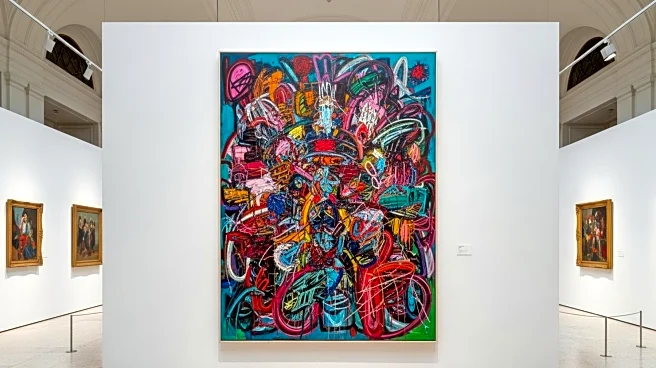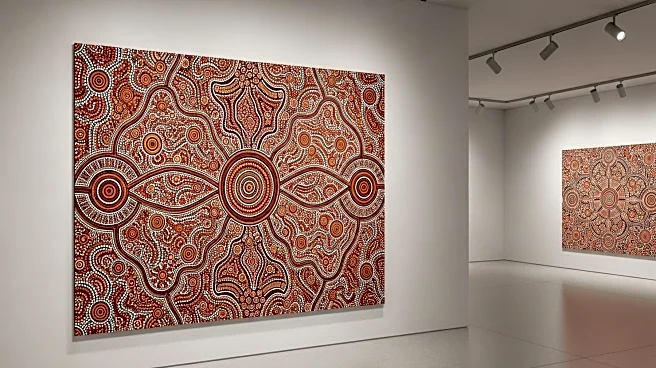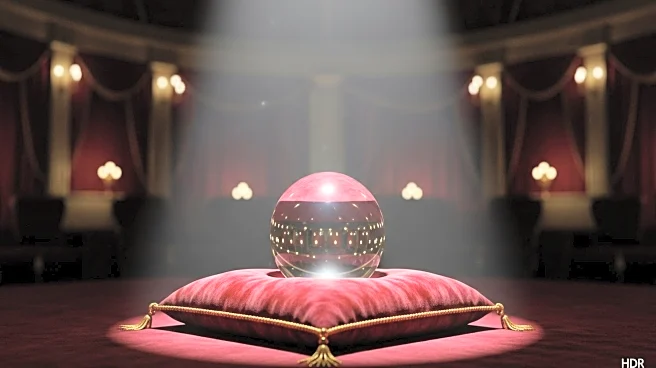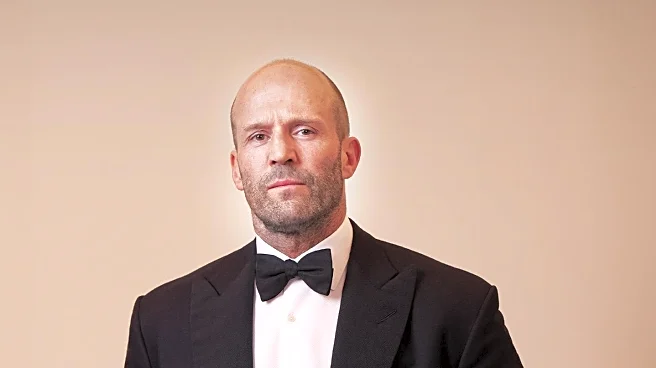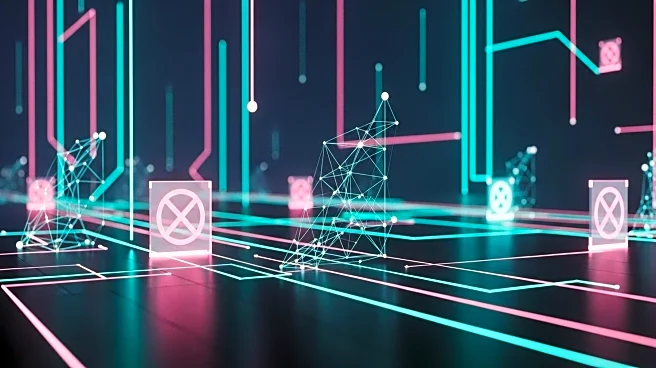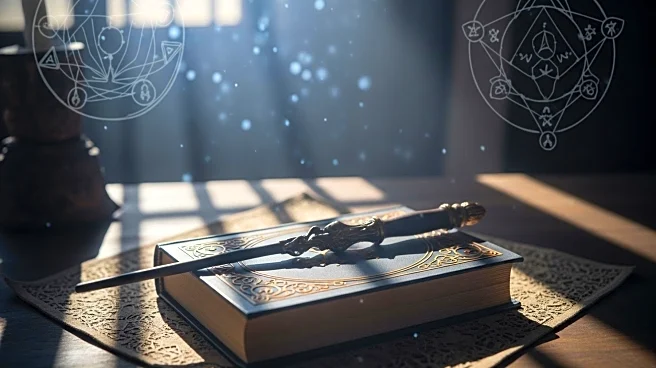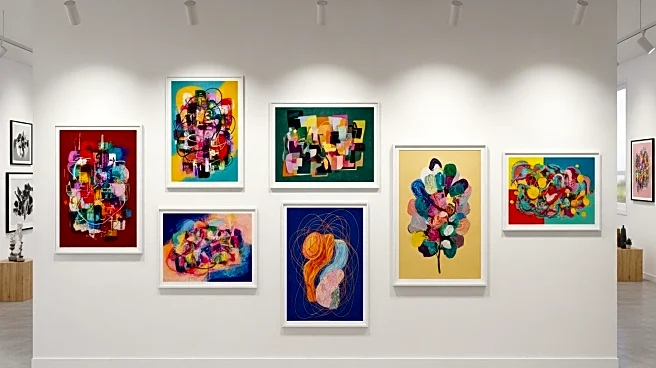What is the story about?
What's Happening?
The theatrical production 'ROHTKO' by Polish director Łukasz Twarkowski is set to open at London's Barbican Centre. The play delves into the themes of authenticity and forgery in the art world, inspired by the infamous Knoedler forgery scandal involving fake Rothko paintings. The production uses multimedia elements, including live video feeds and techno soundtracks, to explore the blurred lines between reality and illusion. The narrative spans from the 1960s to the digital art era, questioning the value of art in the age of NFTs. The play is part of the U.K./Poland Season 2025, a collaborative cultural program.
Why It's Important?
The production 'ROHTKO' highlights ongoing debates about authenticity in the art world, especially in the context of digital art and NFTs. By revisiting the Knoedler scandal, the play raises questions about the nature of art and its emotional impact, regardless of authenticity. This exploration is significant as it challenges traditional notions of value and originality in art, which could influence future art market dynamics and cultural perceptions. The play's innovative approach may also inspire new forms of artistic expression and audience engagement.
What's Next?
Following its run at the Barbican Centre, 'ROHTKO' may continue to tour, potentially reaching broader audiences and sparking further discussions on art authenticity. The production's themes could influence future artistic projects and exhibitions, encouraging more artists to explore similar issues. Additionally, the play's reception may impact cultural programming decisions in other institutions, promoting more interdisciplinary and multimedia approaches in theater and art.
Beyond the Headlines
The play's exploration of authenticity touches on broader cultural and philosophical questions about the nature of reality and perception. By incorporating elements of Shanzhai, a concept of creative counterfeiting, 'ROHTKO' challenges Western-centric views on originality and value. This could lead to a reevaluation of cultural hierarchies and the acceptance of diverse artistic practices. The production also reflects on the role of technology in shaping contemporary art experiences, highlighting the potential for new media to redefine audience engagement.
AI Generated Content
Do you find this article useful?
